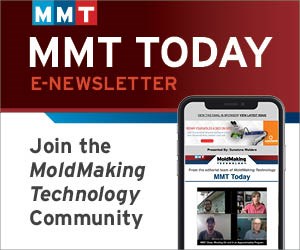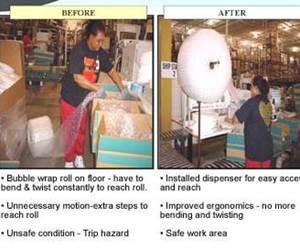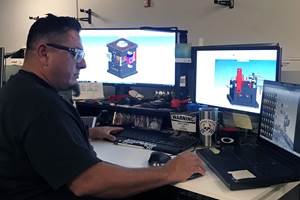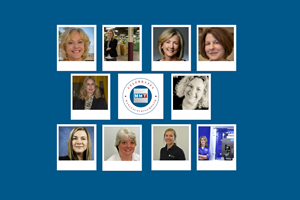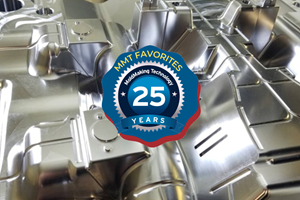Experimenting with 3D Printing
Evaluating the use of this technology will help you determine where to make the smartest investments.
Moldmakers Inc./MGS Tooling has been using various additive manufacturing (AM) technologies for several years to produce conformal and near-conformal cooling channels in molds. For projects with challenging part-design and performance features (for example, thin walls, flatness tolerances and part stability issues) or for projects where cycle-time optimization is critical, we use comprehensive process simulation to experiment with various cooling strategies. These cooling channels often cannot be created using traditional subtractive machining methods.
Unique part geometries require a mix of outside sources to create the involved mold components. As our customer’s applications grow, we continue evaluating the scope of available AM technologies to determine where to make investments in in-house capabilities.
One area for consideration is prototyping. The use of 3D printing for individual or small-lot prototype production was a given. However, projects requiring a larger number of proto-parts—several dozen, for example—could easily tie up a 3D printer for weeks. Through our research, our company became aware of the option of using AM to create temporary inserts/mold components, but documented results and case study reports on this option were hard to come by. We decided to plan our own experiments using AM, setting out to 3D-print core and cavity stacks used in a mold base. We took an existing ring-like part design and modified it to approximate some of the challenging geometry features we often encounter.
Our goal was to learn as much as we could about:
• The limitations of 3D-printed injection mold components of general part design (for example, draft angles, depth of features, gating and wall thickness).
• The limitations of mold materials that could be used for the fabrication of the components (for example, which resin is suited/not suited for which technique).
• The true cost of manufacturing a mold in this fashion and the lead time for producing parts (not just the cost of the printed core and cavity components).
• The number of usable parts we could mold using any given system.
We needed to know what could be done, which also meant we had to learn what could not be done. We chose to evaluate two styles of 3D fabrication: stereolithography (SLA) and layer additive technology. We also chose three common resins to mold: polypropylene (PP), acrylonitrile butadiene styrene (ABS) and nylon 66. We quickly learned that these 3D inserts are relatively fragile and must be handled with care. Also, these materials do not pull heat out of the part the way steel does, so cycle times are much, much longer, and shrinkage results will not be transferrable to the final production model.
Evaluating the use of 3D technology is certainly not a one-day study. Several events need to be planned, all requiring a dedicated press, a process technician/operator and a project manager. Over the next few months, we will continue to try different materials and different construction technologies. I will be working closely with our engineers to assist in documenting these activities and plan on sharing many of our learnings with you in a detailed article next year.
Related Content
Making Quick and Easy Kaizen Work for Your Shop
Within each person is unlimited creative potential to improve shop operations.
Read MoreMold Design Review: The Complete Checklist
Gerardo (Jerry) Miranda III, former global tooling manager for Oakley sunglasses, reshares his complete mold design checklist, an essential part of the product time and cost-to-market process.
Read MoreWomen Impacting Moldmaking
Honoring female makers, innovators and leaders who are influencing our industry's future.
Read MoreLeading Mold Manufacturers Share Best Practices for Improving Efficiency
Precise Tooling Solutions, X-Cell Tool and Mold, M&M Tool and Mold, Ameritech Die & Mold, and Cavalier Tool & Manufacturing, sit down for a fast-paced Q&A focused on strategies for improving efficiencies across their operations.
Read MoreRead Next
Achieving Program Management Success
Effective communication is essential for maintaining good working relationships, keeping customers satisfied and achieving desirable outcomes.
Read MoreAchieving Program Management Success
Effective communication is essential for maintaining good working relationships, keeping customers satisfied and achieving desirable outcomes.
Read MoreCreating Culture
Cultivating a team environment lightens the load on the individual person and distributes it among many, enabling faster lead times and better-quality products.
Read More.jpg;maxWidth=970;quality=90)



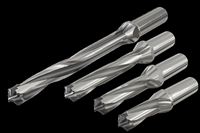
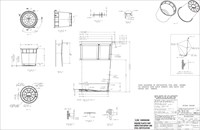

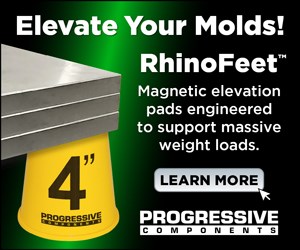
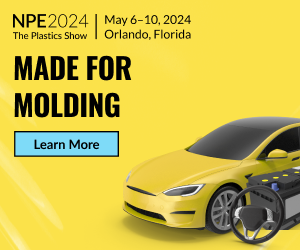
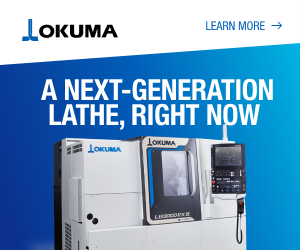
.png;maxWidth=300;quality=90)


.jpg;maxWidth=300;quality=90)
